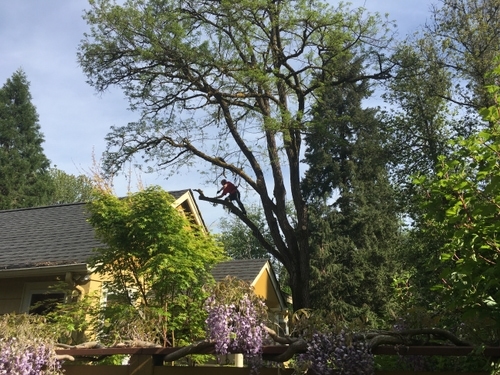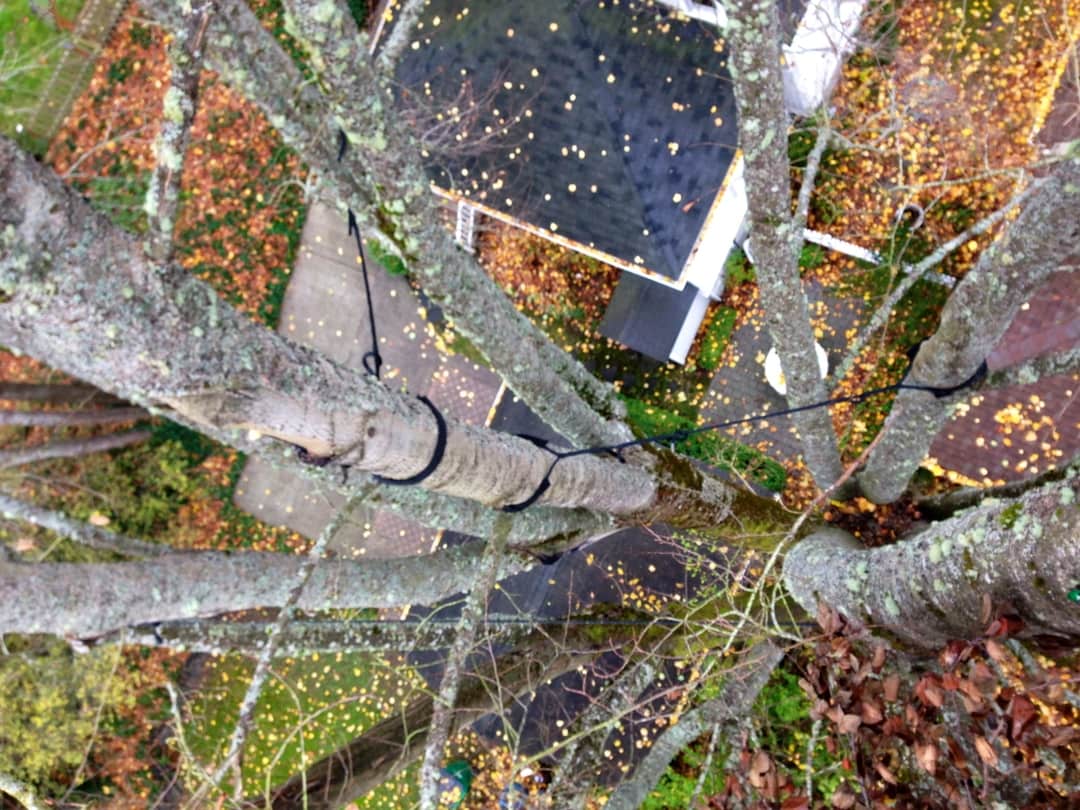We Care For Your Trees As If They Were Our Own.
Trees also provide numerous aesthetic and economical benefits to your property.
Contact Us
Our knowledgeable tree care team provides diagnoses and hazard assessments before any saws are fired up.
Consultation
We provide knowledgeable diagnoses and hazard tree assessments.
We offer tree and landscape consultation including diagnostic services, hazard tree evaluations, construction site advice and tree preservation methods. We also offer written reports and assessments.

CROWN CLEANING
Selective removal of branches to increase light and air circulation.
Crown-thinning and deadwood removal opens the canopy of a tree, reduces end-weight on heavy limbs, distributes light throughout the tree and helps restore the tree’s natural shape. We do this by removing dead, diseased, crowded or weak branches from your tree or shrub. In almost all trees, we climb without using climbing spurs and adhere to all of the International Society of Arboriculture standards of proper tree care.

CROWN RAISING
Removal of lower branches to allow air flow and clearance.
Removing the lowest branches on a tree provides space for working in the yard or creating more light and room for other trees and shrubs in your landscape. Crown-raising trees near a house prevents damage to your roof, gutters and service lines. Branches that droop into the driveway, sidewalk or street should be properly pruned to allow free movement of pedestrians and vehicles.

CROWN RESTORATION
Restructuring the canopy of a previously topped tree.
Restructuring the canopy of a previously topped or storm damaged tree is done by selectively thinning the tops back to dominant stems and trunks. Crown restoration takes time and is often accomplished in two to three years by using crown-cleaning and thinning techniques. Restorative pruning is one of our specialties.

Cabling
Cables support natural flaws in a tree’s structure.
This procedure uses high strength nylon Cobra cables to support natural flaws in a tree’s structure. Cabling can also be effective when a tree has been previously topped and more than one trunk is present. This reduces limb splitting during strong wind or ice storms. When splitting has occurred, we encourage bracing limbs or trunks with threaded steel rods for support, opposed to removal.

TREE REMOVAL
Although tree removal is a last resort, there are circumstances when it is necessary.
With our knowledge, skills and equipment we can safely and efficiently remove trees without greatly impacting the surrounding environment. In a standard removal, stumps will be cut as flush as possible to the ground line; wood will be bucked into 14-16” lengths and left at the base of the tree. We also can transform that tree into a wildlife habitat snag. Ask us for more info. Replacement planting? We offer that as well.

STORM DAMAGE
Emergency tree removal and clean-up.
We provide emergency tree removal and clean-up sevices when disaster strikes. We also offer crane services when needed.

STUMP GRINDING
Removal of tree stumps.

We offer stump grinding as an option when trees are to be removed. Stumps are ground to a depth of about 13” and includes the removal of all existing trunk flares and large trailing roots that will impact the future planting area. Stump chips are usually left on site and can be used as a mulch.
Do you need a Certified Arborist?
Why Topping Hurts Trees
Concerned about the health and safety of your trees?
Why we do not recommend "windsailing" your trees
Clean and tidy.
